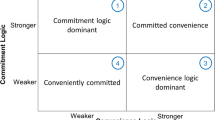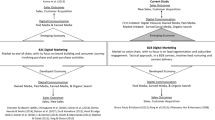Abstract
Electronic books’ pricing model and launch strategy are main issues concerned by the members of the book supply chain. Inspired by this fact, this paper establishes analytical models to investigate the publisher’s and the bookstore’s optimal decisions combined with pricing models (the agency model or the wholesale model) and launch strategies (the simultaneous launch strategy or the delaying launch strategy) of electronic books in a book supply chain. Additionally, we analyze the impacts of exogenous parameters on the publisher’s and the bookstore’s optimal strategies. Our findings illustrate that both the publisher and the bookstore can benefit from the agency model if they agree on a moderate proportion of e-books’ profit sharing. Moreover, we find that both the publisher and the bookstore can benefit from the delaying launch strategy when the product substitutability between electronic books and physical books is low and the cannibalization effect of delaying launch is significant. This finding is different from former study, which ignored the cannibalization rate caused by delaying launch strategy and showed that the delaying launch strategy always hurts the profits of publishers and bookstores.




Similar content being viewed by others
References
Burk, R. (2001). E-book devices and the marketplace: In search of customers. Library Hi Tech, 19(4), 325–331.
Chen, H., Hu, Y. J., & Smith, M. D. (2019). The impact of e-book distribution on print sales: Analysis of a natural experiment. Management Science, 65(1), 19–31.
Chen, K. Y., Kaya, M., & Ozer, O. (2008). Dual sales channel management with service competition. Manufacturing & Service Operations Management, 10(4), 654–675.
Chen, P., Li, B., Jiang, Y., & Hou, P. (2017). The impact of manufacturer’s direct sales and cost information asymmetry in a dual-channel supply chain with a risk-averse retailer. International Journal of Electronic Commerce, 21(1), 47–70.
Chiang, W. Y. K., Chhajed, D., & Hess, J. D. (2003). Direct marketing, indirect profits: A strategic analysis of dual-channel supply-chain design. Management science, 49(1), 1–20.
Dan, B., Guangye, X., & Liu, C. (2012). Pricing policies in a dual-channel supply chain with retail services. International Journal of Production Economics, 139(1), 312–320.
Hao, L., & Fan, M. (2014). An analysis of pricing models in the electronic book market. Management Information Systems Quarterly, 38(4), 1017–1032.
Hua, G., Cheng, T. C. E., & Wang, S. (2011). Electronic books: To E or not to E? A strategic analysis of distribution channel choices of publishers. International Journal of Production Economics, 129(2), 338–346.
Hua, G., Wang, S., & Cheng, T. C. E. (2010). Price and lead time decisions in dual-channel supply chains. European Journal of Operational Research, 205(1), 113–126.
Jiang, Y., & Katsamakas, E. (2010). Impact of e-book technology: Ownership and market asymmetries in digital transformation. Electronic Commerce Research and Applications, 9(5), 386–399.
Li, C., & King, R. C. (2017). To lend is to own: A game theoretic analysis of the e-book lending market. International Journal of Electronic Commerce, 21(3), 334–362.
Li, Y., Lin, Z., Lei, X., & Swain, A. (2015). “Do the electronic books reinforce the dynamics of book supply chain market?”—A theoretical analysis. European Journal of Operational Research, 245(2), 591–601.
Lu, Q., Shi, V., & Huang, J. (2018). Who benefit from agency model: A strategic analysis of pricing models in distribution channels of physical books and e-books. European Journal of Operational Research, 264(3), 1074–1091.
Martin-Herran, G. (2011). Strategic interactions in traditional franchise systems: Are franchisors always better off? European Journal of Operational Research, 213(3), 526–537.
Ramaiah, C. K. (2005). An overview of electronic books: A bibliography. Electronic Library, 23(1), 17–44.
Rao, S. S. (2003). Electronic books: A review and evaluation. Library Hi Tech, 21(1), 85–93.
Rao, S. S. (2004). Electronic book technologies: An overview of the present situation. Library Review, 53(7), 363–371.
Shah, J., & Brown, R. M, Jr. (2005). Towards electronic paper displays made from microbial cellulose. Applied Microbiology & Biotechnology, 66(4), 352–5.
Tan, Y., Carrillo, J. E., & Cheng, H. K. (2016). The agency model for digital goods. Decision Sciences, 47(4), 628–660.
Tsay, A. A., & Agrawal, N. (2000). Channel dynamics under price and service competition. Manufacturing & Service Operations Management, 2(4), 372–391.
Vasileiou, M., Hartley, R., & Rowley, J. (2009). An overview of the e-book marketplace. Online Information Review, 33(1), 173–192.
Weinstein, A. (2010). A look at global expansion for e-books. Publishing Research Quarterly, 26(1), 11–15.
Wirl, F. (2018). Agency model and wholesale pricing: Apple versus amazon in the e-book market. International Journal of the Economics of Business, 25(2), 243–264.
Woody, W. D., Daniel, D. B., & Baker, C. A. (2010). E-books or textbooks: Students prefer textbooks. Computers & Education, 55(3), 945–948.
Xu, H., Liu, Z. Z., & Zhang, S. H. (2012). A strategic analysis of dual-channel supply chain design with price and delivery lead time considerations. International Journal of Production Economics, 139(2), 654–663.
Yan, R., & Pei, Z. (2015). The strategic value of cooperative advertising in the dual-channel competition. International Journal of Electronic Commerce, 19(3), 118–143.
Yao, D. Q., & Liu, J. J. (2005). Competitive pricing of mixed retail and e-tail distribution channels. Omega, 33(3), 235–247.
Zhu, C., & Zhong, Y. (2018). Comparison between the agency and wholesale model under the e-book duopoly market. Electronic Commerce Research, 18(2), 313–337.
Acknowledgements
This work was supported by the National Natural Science Foundation of China (No. 41971252).
Author information
Authors and Affiliations
Corresponding author
Additional information
Publisher's Note
Springer Nature remains neutral with regard to jurisdictional claims in published maps and institutional affiliations.
Appendix
Appendix
1.1 Proof of Proposition 1
-
(1)
\(w_p^{AS} - w_p^{WS} = \dfrac{\alpha (1-\gamma )}{2(\alpha - 1)} <0\), so we can get \(w_p^{AS} < w_p^{WS}\).
-
(2)
\(w_p^{AD} - w_p^{WD} = \dfrac{\alpha (2\gamma -1)(4\gamma (1-\lambda )+\alpha (C_p+(4\gamma -1)(1+\lambda )))}{2(8 \gamma -\alpha ^2)}\), we can get Proposition 1(2) by solving this function.
1.2 Proof of Proposition 2
-
(1)
\(w_e^{WD} - w_e^{WS} = \dfrac{\alpha ^2+\lambda (\alpha -1)^2}{2(\alpha - 1)} <0\), so we can get \(w_e^{WD} < w_e^{WS}\).
-
(2)
\(w_p^{WD} - w_p^{WS} = \dfrac{\alpha +2\lambda }{2(\alpha -1)}\), we can get Proposition 2(2) and (3) by solving this function.
1.3 Proof of Proposition 3
-
(1)
\(p_p^{AS} - p_p^{WS} = \dfrac{\alpha }{4(\alpha - 1)} <0\), \(p_e^{AS} - p_e^{WS} = \dfrac{1}{4(\alpha - 1)} <0\), so we can get \(p_p^{AS} < p_p^{WS}\) and \(p_e^{AS} < p_e^{WS}\).
-
(2)
\(p_p^{AD} - p_p^{WD} = \dfrac{\alpha ^2 (2\gamma -1)(-2+2C_p+\alpha +\alpha ^2+(\alpha -2)(1+\alpha )\lambda )}{2(\alpha ^2-4)(\alpha ^2-8\gamma )}\), we can get Proposition 3(2) and (3) by solving this function.
1.4 Proof of Proposition 4
-
(1)
\(p_e^{WD} - p_e^{WS} = \dfrac{3}{4(\alpha - 1)} + \dfrac{6(\lambda -1)-\alpha ^2(\lambda -1)+\alpha ^3(1+\lambda )-\alpha (5+C_p+5\lambda )}{2(\alpha ^2 - 4)} <0\), so we can get \(p_e^{WD} < p_e^{WS}\).
-
(2)
\(p_p^{WD} - p_p^{WS} = \dfrac{-\alpha (10+\alpha -C_p \alpha +\alpha ^2(C_p-2))+2\lambda (6-7\alpha +\alpha ^3)}{4(\alpha ^2-4)(\alpha -1)}\), we can get Proposition 4(2) and (3) by solving this function.
The following Propositions’ demonstrations are simple, so we omit them.
Rights and permissions
About this article
Cite this article
Ke, H., Ye, S. & Mo, Y. A comparison between the wholesale model and the agency model with different launch strategies in the book supply chain. Electron Commer Res 22, 1491–1513 (2022). https://doi.org/10.1007/s10660-021-09474-z
Accepted:
Published:
Issue Date:
DOI: https://doi.org/10.1007/s10660-021-09474-z




